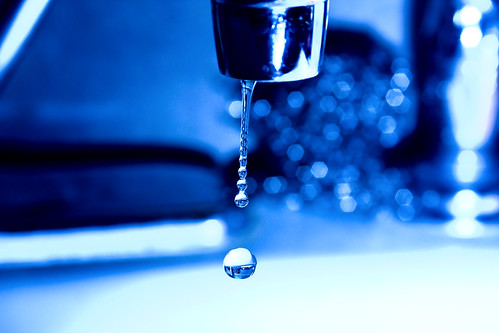Its that time of the year! Spring Cleaning and honey do lists!! I thought this would be an appropriate time to post some words of DIY wisdom!
How To Fix A Leaky Faucet
 We've all been
there. Trying to sleep and we can't
because....there it is. The constant drip-drip-drip of that darn leaky
faucet. No matter how hard you turn the
handle, the stupid thing just won't stop it's constant dripping.
We've all been
there. Trying to sleep and we can't
because....there it is. The constant drip-drip-drip of that darn leaky
faucet. No matter how hard you turn the
handle, the stupid thing just won't stop it's constant dripping.
But before you bring over your cousin Earl (who's always
bragging about what a brilliant self-taught plumber he is), let's see if you
can’t make any headway on this leaky faucet yourself.
The vast majority of leaky faucets are due to a faulty
handle where wear and tear or an obstruction or buildup of debris is keeping
the handle from fully shutting off the water .
There are four major types of faucets: compression, ball, ceramic disc, and cartridge
faucets.
The best way to fix a leaky faucet is to actually remove the
handle that is loose or worn down and clean it's parts from any corrosion or
debris buildup. So here's how you go
about doing that without flooding your entire house:
Before you get started, it's important to do these things
first:
1. Shut off the water
from under the sink by finding the cut off valve.
2. Cover the sink
drain to ensure screws, nuts, bolts and other small objects don't fall in it.
3. Put some duct tape
around the jaws of your wrench to ensure you don't scratch up the fixture.
4. Spread a towel out on the counter for laying out all the
faucet parts.
5. Have a small container of distilled white vinegar and a scouring pad for cleaning off the mineral deposits and other debris on the faucet parts.
5. Have a small container of distilled white vinegar and a scouring pad for cleaning off the mineral deposits and other debris on the faucet parts.
Most likely if you have a leaky faucet, you have a
compression faucet. Compression faucets
are the most likely faucets to develop a leak; but thankfully they are also the
easiest to fix.
Here's how to deassemble the compression faucet:
Pry off the decorative cap on top of the faucet handle. You will see the top of a screw that is
holding the handle into place. Remove it
with a screwdriver. Lift the handle up
and you will see a packing nut. Remove
the packing nut with your wrench and lift it up - it is joined to a stem, and
on the end of the stem you will find an O-ring and a rubber seat washer. These
small rubber washers are how compression faucets shut off the water. If your rubber washer has become too worn,
you’ll want to replace it as it may very well be the cause of your leak.
After you’ve taken everything apart, clean each piece well
with the vinegar. Then, reassemble the faucet. Make sure the faucet works and
that water flows as usual. Then cross those fingers and see if the leak
remains. In most cases, cleaning the faucet’s components and/or replacing the
rubber washers will effectively solve the problem and you’ll be leak-free. But
in those rare cases when you need to contact a professional, it helps to have a
home warranty that can cover the repairs.
About the Author: Doug
Harris is a home repair man, a do-it-yourself’er, and a general “thing” fixer.
He’s been fixing things since he was 6 years old and is a passionate DIY
advocate. Be sure to connect with him over at Google+ and on his
blog DIY Home Repair
& Maintenance for more tips on improving your home.
Photo credit: http://www.flickr.com/photos/jkunz/3591367450/
Leaky faucets drive me bonkers! We have one in our bathtub and I have been on Brian for a couple months now.
ReplyDeleteI swear I am going to fix it myself!
¤´¨)
¸.•*´
(¸¤ Lanaya | xoxo
www.raising-reagan.com